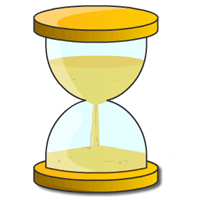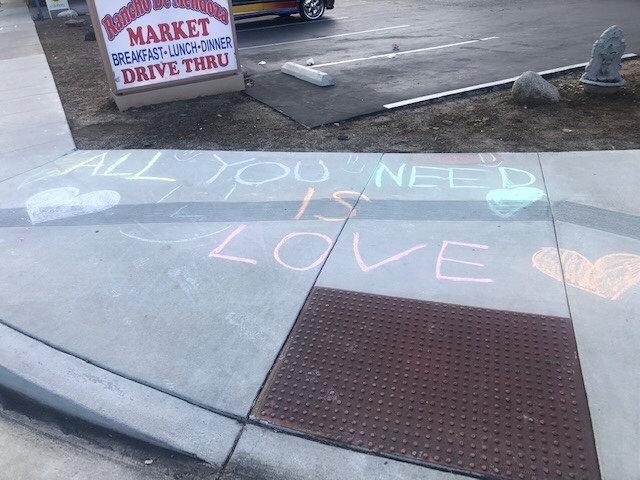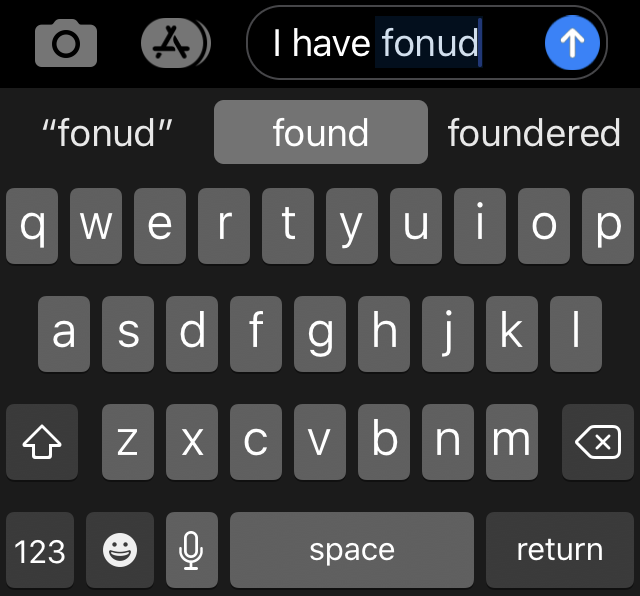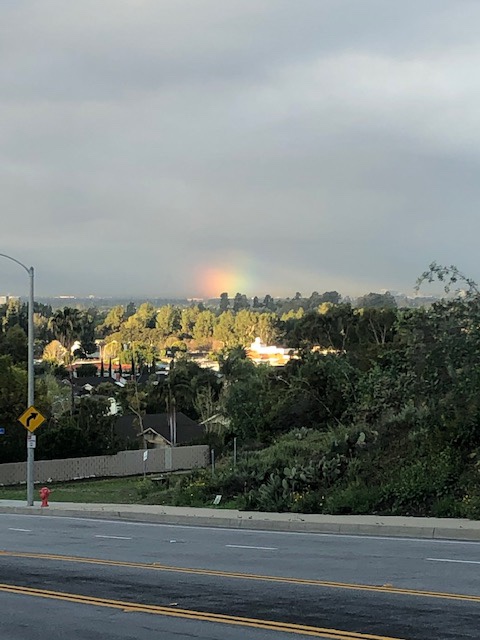
Just as yesterday I talked about the abrupt shift to online instruction, today I want to talk about another paradigm slam that our new realities have made commonplace. Since we are locked in our houses either alone or with a tight circle, the bulk of our friendly and business intercourse has moved overnight to various digital platforms, from texting and calling, to the video options of Skype, FaceTime, GoToMeeting, Zoom, etc. I FaceTime with my daughter regularly. My next door neighbor meets with her Zen group multiple times a week for meditation and sharing. People are holding virtual cocktail parties with friends, we held a virtual book club this week, and of course, those that can are continuing business via zoom meetings all day long.
Though it has been impressive how quickly this shift has taken place and how many, who might never have considered using these tools, have taken to them, I am also hearing amid the flood of communication a recognition of loss and a fatigue with the medium. This is particularly true with business via zoom. I have had many home workers say to me how tired they are after a meeting and how the platform has quickly lost its novelty and has become a drudge. A counselor who met with patients for a full day of FaceTime sessions said that she had never felt as exhausted when meeting people in her office. One friend did say that she hadn’t noticed any difference, though she had been doing this for a while, and I suspect there is always some outlier experience. “FaceTime Fatigue” will be one of the side effects of the realities of the spring of 2020. Though I suspect there are myriad reasons for this fatigue, three come to mind as probably most prevalent.
The first is focus. When in a meeting room, each person is simultaneously immersed in the meeting (not to say that people don’t drift off) and there are fewer distractions. Sitting in one’s kitchen, it is far easier to lose focus or to notice something that is cooking, needs cleaning, or needs doing later in the day. Adding in the noise and demands of children, appliances, and spouses (in that order), it is a wonder that we have any focus for the upcoming sales campaign. Just as we are distracted, so is every other attendee, so one can never be certain the level of attention or comprehension of the others. Once again, this is not unique to digital meetings; however, every challenge to a live meeting is compounded at home, and the exhaustion comes from working to hold focus in a wind tunnel.
The second issue is more directly tied to the nature of screen communications. Even with the best of cameras and connections (which we often don’t have) it is challenging to read affect over a screen as easily as we do in person. Our communication is built on hundreds, perhaps thousands, of visual and aural cues, many of which are literally flattened on a screen. We are having to make more assumptions, more guesses, which creates low level stress through the whole encounter. I noticed this during our virtual book club, when I found myself having to be much broader in humor, and I was texting people during the meeting to explain subtext of what I was saying to avoid hurt feelings. The usual easy going patter of the meeting was doubled and tripled in complexity by “reading”challenges, turning much of the conversation into, “What do you mean by that?”
Finally there are the practical maddening challenges of an imperfect medium. Echoing sound, uncertainty of who is speaking, and people leaving the digital room and reentering because of poor connections are all part of almost every digital meeting. Most meetings take several minutes to simply establish everyone in the room, and by this time many attendees are climbing the walls, “Fix your stinking microphone!” “Mute yourself when you are not talking!” ” Unmute yourself when you want to talk!” are thoughts going through peoples heads instead of the focus of the meeting. Something particularly maddening for me is the inability for two people to speak at once. While this is never a good practice, and maybe we will become better at it during this time, it’s bothersome to hear the blur and then have each person stop only to start again simultaneously like two cars edging out into an intersection of Hell and No. lack of visual clues makes this all the more challenging both for the speakers and all the listeners.
Apart from these is the interesting new phenomena of “Zoom bombing,” strangers jumping into public zoom meetings and making a scene. If you want an example, search “Poor Jennifer” on YouTube, but be warned, it’s NSFW.
This is not to suggest that we abandon this platform, any more than abandoning text because of autocorrrect fails. Several imperfect things are saving us from isolation and chaos right now. However, by acknowledging the challenges, we might be able to create experiences that are more practical and less stressful.
Darn it! My mic has been off this whole time so no one heard anything!
Be safe, be strong.


 This is my middle balcony. I have a balcony or patio on each level. It is right off the living room on the floor one enters. It is lovely as you can see, and it has the sound of running water from the (artificial) stream below. The sky has been incredibly blue recently, hasn’t it? It will be a wonderful place to enjoy drinks or even dinner with friends…ah, dinner with friends, I remember that.
This is my middle balcony. I have a balcony or patio on each level. It is right off the living room on the floor one enters. It is lovely as you can see, and it has the sound of running water from the (artificial) stream below. The sky has been incredibly blue recently, hasn’t it? It will be a wonderful place to enjoy drinks or even dinner with friends…ah, dinner with friends, I remember that. As we enter the third week of somewhat intense lockdown, I was reflecting on the first two weeks and realizing (as I suppose many others are) that I am not well made for this. I hear of people on Facebook and elsewhere who are reveling in the time and solitude, and though I have always enjoyed my space, I find myself counting hours by minutes and looking for ANY excuse to leave the house (if you need me to do your shopping, call. If you want me to stand in line at the DMV…). I think this is mainly because I lack two fundamental characteristics that are most needed to manage this time, patience and the ability to give up control.
As we enter the third week of somewhat intense lockdown, I was reflecting on the first two weeks and realizing (as I suppose many others are) that I am not well made for this. I hear of people on Facebook and elsewhere who are reveling in the time and solitude, and though I have always enjoyed my space, I find myself counting hours by minutes and looking for ANY excuse to leave the house (if you need me to do your shopping, call. If you want me to stand in line at the DMV…). I think this is mainly because I lack two fundamental characteristics that are most needed to manage this time, patience and the ability to give up control.


 Perhaps you have seen them, and I am late to the game. I have seen chalk messages on Facebook, but this morning I came upon two during my walk to the store. These random messages of hope are apparently becoming part of our collective coping mechanism. Yesterday my friends were telling me about a “socially distant” neighborhood picnic, with each family eating on their own porches and drawing chalk messages on their sidewalks.
Perhaps you have seen them, and I am late to the game. I have seen chalk messages on Facebook, but this morning I came upon two during my walk to the store. These random messages of hope are apparently becoming part of our collective coping mechanism. Yesterday my friends were telling me about a “socially distant” neighborhood picnic, with each family eating on their own porches and drawing chalk messages on their sidewalks.
 While taking my daily walk to the store today, I was greeted with just a nub of a rainbow on the horizon. Of course one cannot see a rainbow without immediately jumping to metaphor and anthropomorphism.
While taking my daily walk to the store today, I was greeted with just a nub of a rainbow on the horizon. Of course one cannot see a rainbow without immediately jumping to metaphor and anthropomorphism.